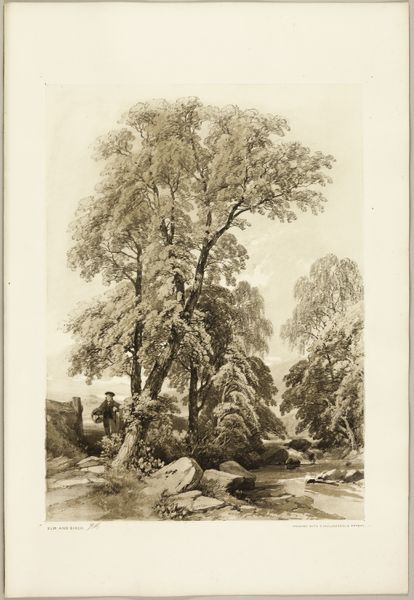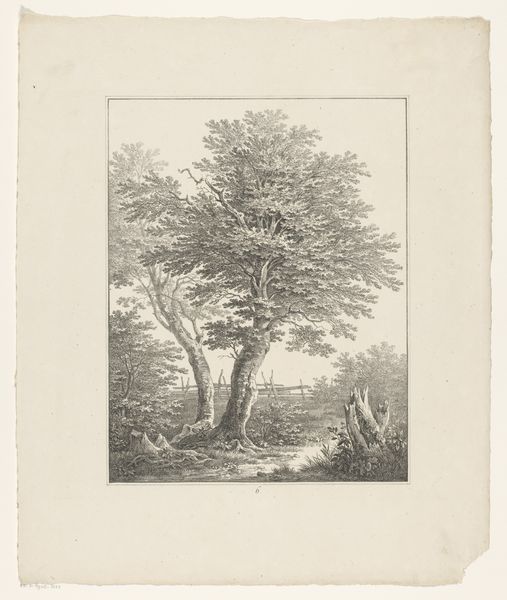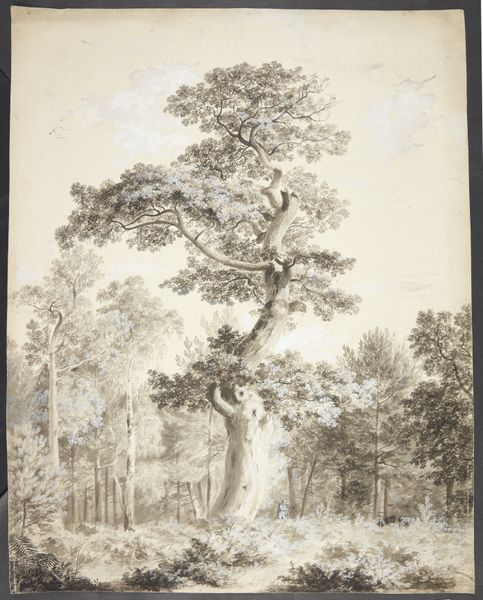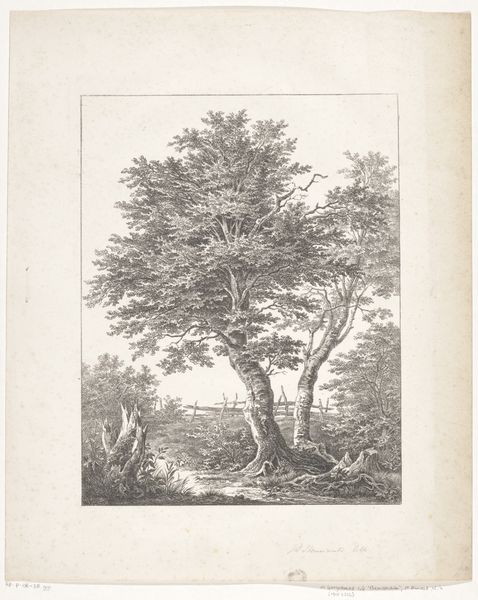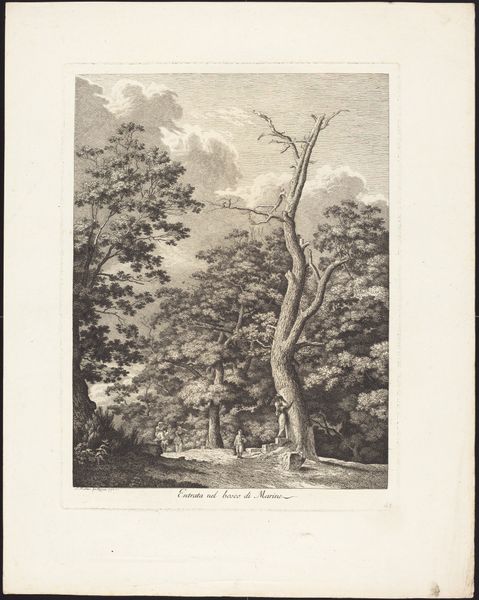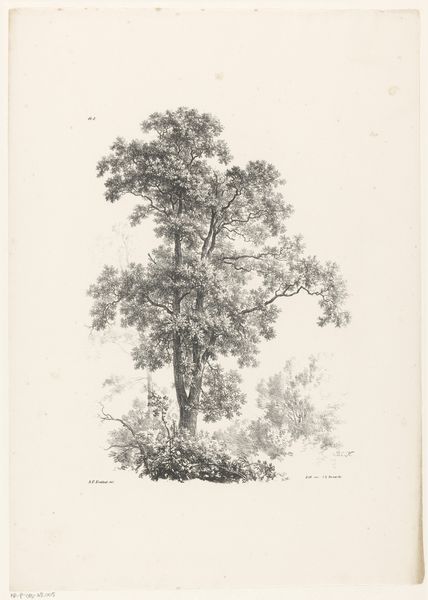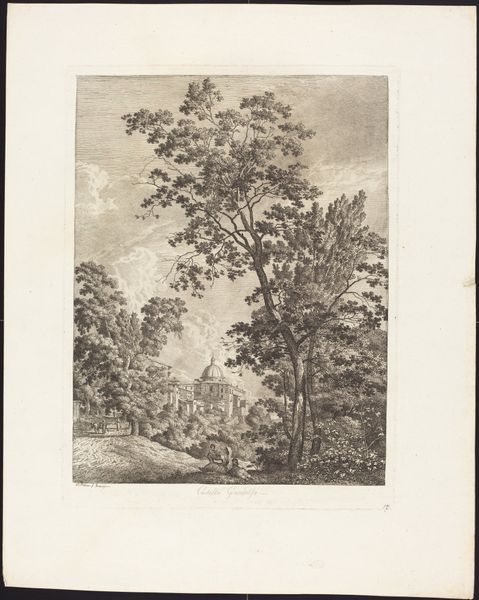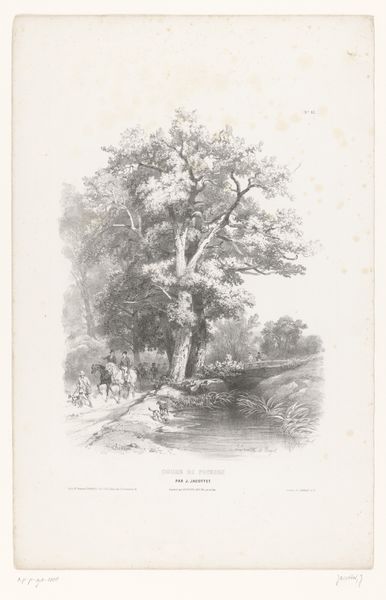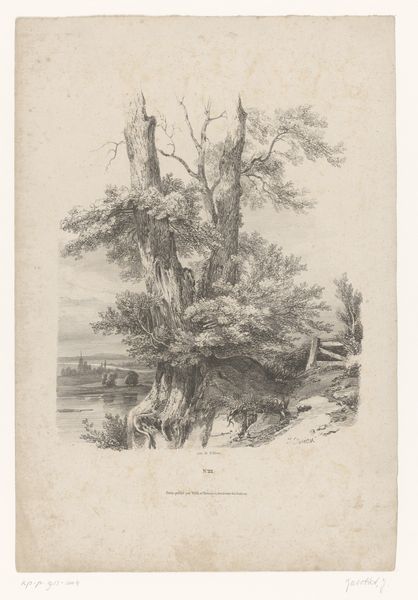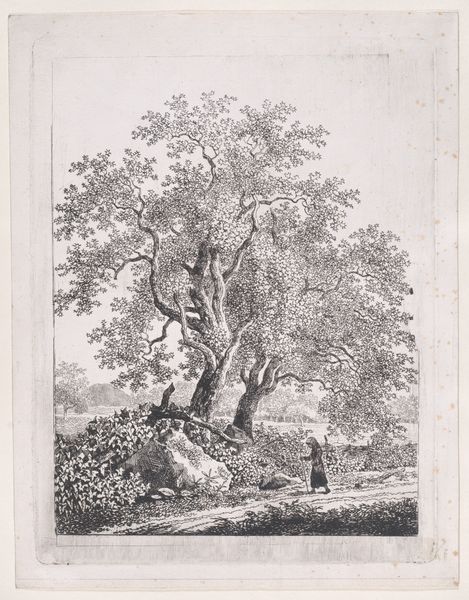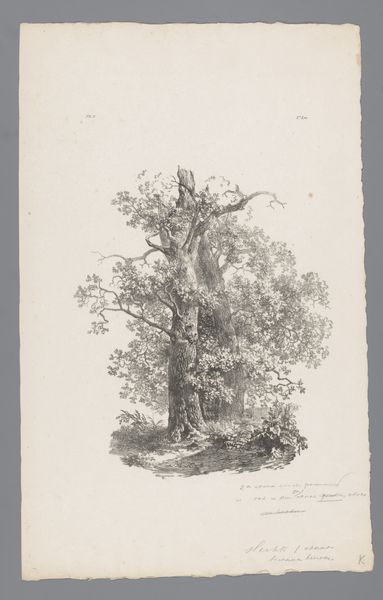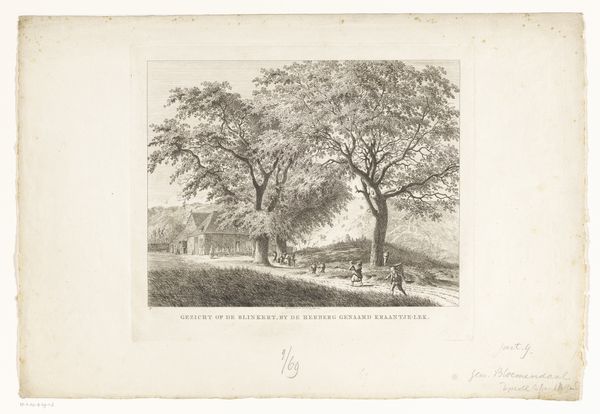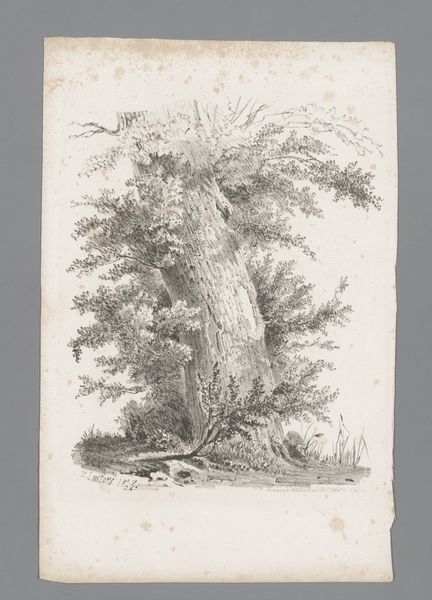
drawing, lithograph, print, paper
#
drawing
#
lithograph
# print
#
landscape
#
paper
#
romanticism
#
realism
Dimensions: 396 × 291 mm (image); 541 × 369 mm (sheet)
Copyright: Public Domain
Curator: Let’s turn our attention to James Duffield Harding’s 1841 lithograph, "Elm, from The Park and the Forest," currently residing here at The Art Institute of Chicago. What’s your initial reaction to it? Editor: The overall effect is incredibly serene, isn’t it? There's a sense of gentle light filtering through the leaves and a quiet stillness that is inviting, maybe even nostalgic. It captures a very specific moment of idyllic repose. Curator: Harding was deeply interested in landscape, and this work speaks volumes about the romanticization of nature during the 19th century. The specific setting – the park –becomes a key element to explore how society engages with nature as something both wild and constructed, representing the shifting boundaries of public versus private land. Editor: The composition clearly directs the viewer's eye, from the massive, towering elm in the foreground to the more diminutive human presence taking shade, doesn’t it? I’m immediately curious about that small group of figures; who are they, what’s their relationship to the tree, the land? I’m interested in how they intersect to create and shape community dynamics. Curator: Consider how rapidly industrialization was transforming the landscape. This print presents an idealized version, and this artistic decision invites dialogue about whose access is centered when defining or deciding on concepts around notions of ‘natural’ beauty, especially concerning ideas of preservation, gender, class, or race. Editor: Right, because that idyll is deliberately cultivated, carefully chosen to exclude certain elements, probably specific social groups who have little time for recreation in manicured parks. What do you think, then, of Harding's choice of lithography here, particularly the gradations of light and shadow? Curator: Harding helped popularize lithography in England at this time, seeking its broad dissemination of landscape imagery among varied middle-class viewers, further influencing understandings about ‘appropriate’ public access and behavior regarding the outdoors. Lithography democratized images; they could be circulated and shared, fostering and reinforcing aesthetic ideas. Editor: Ultimately, the tree stands both literally and metaphorically as the image’s enduring, grounding center. In its massive rooted presence, there seems to exist not only physical shelter but also enduring refuge from societal change and stress. Curator: Indeed. Considering how urban life and perceptions were evolving then really emphasizes Harding’s intention here – a need for the enduring image. Editor: Well, that gives us plenty to contemplate as we move along. Thank you.
Comments
No comments
Be the first to comment and join the conversation on the ultimate creative platform.
